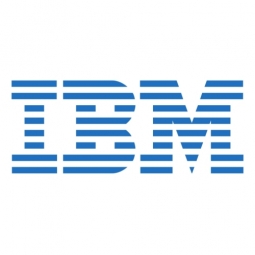Technology Category
- Analytics & Modeling - Predictive Analytics
- Cybersecurity & Privacy - Identity & Authentication Management
Applicable Industries
- Buildings
- Cement
Applicable Functions
- Quality Assurance
Use Cases
- Building Automation & Control
- Time Sensitive Networking
Services
- Cloud Planning, Design & Implementation Services
- Training
About The Customer
British American Tobacco (BAT) is a leading tobacco group founded in 1902. The company employs more than 57,900 people and its brands are sold in more than 200 markets. Headquartered in London, England, BAT generates annual revenues equivalent to approximately USD64 billion. The company operates in the Fast-Moving Consumer Goods (FMCG) space, contending with heavy regulation and the need for a constant flow of innovative newcomers to stay competitive. BAT aims to fill 20 percent of all management-level vacancies from outside of the company, emphasizing the importance of new talent to increase the cognitive diversity of the organization and create more effective ways of working.
The Challenge
British American Tobacco (BAT), a leading tobacco group, was facing a challenge in identifying and employing the best candidates for its management-level vacancies. The company was heavily reliant on third-party recruiters, contracting more than 70 separate agencies each year worldwide. This resulted in a diverse level and quality of candidates, with some regions falling below BAT's expectations. To support its long-term competitiveness, BAT aimed to implement a consistent approach to recruitment across its global operations, enabling it to identify and select the best candidates. The challenge was to encourage the best candidates to apply and to identify top performers in a large pool of applicants, especially in markets where BAT's brand was perceived less favorably.
The Solution
BAT decided to transition to analytics-based direct hiring processes. The company selected IBM to provide the basis for its talent transformation program, implementing a new platform based on IBM® Kenexa® BrassRing on Cloud and IBM Kenexa Skills Assessments on Cloud. The solution was based on three key elements: a business psychology consultancy to identify the characteristics that define excellence in leadership roles; custom-designed online and face-to-face assessments; and enterprise-class IBM Kenexa solutions to automate and streamline the direct recruiting process. BAT used predictive analytics in IBM Kenexa solutions to determine which candidates had the highest likelihood of thriving in the role they applied for. The IBM team also provided in-depth training for BAT’s global talent leaders and a series of webinars to ensure BAT’s in-house recruitment teams were able to use the new tools to make well-informed decisions based on analytics insights.
Operational Impact
Quantitative Benefit

Case Study missing?
Start adding your own!
Register with your work email and create a new case study profile for your business.
Related Case Studies.

Case Study
System 800xA at Indian Cement Plants
Chettinad Cement recognized that further efficiencies could be achieved in its cement manufacturing process. It looked to investing in comprehensive operational and control technologies to manage and derive productivity and energy efficiency gains from the assets on Line 2, their second plant in India.

Case Study
Energy Saving & Power Monitoring System
Recently a university in Taiwan was experiencing dramatic power usage increases due to its growing number of campus buildings and students. Aiming to analyze their power consumption and increase their power efficiency across 52 buildings, the university wanted to build a power management system utilizing web-based hardware and software. With these goals in mind, they contacted Advantech to help them develop their system and provide them with the means to save energy in the years to come.

Case Study
Intelligent Building Automation System and Energy Saving Solution
One of the most difficult problems facing the world is conserving energy in buildings. However, it is not easy to have a cost-effective solution to reduce energy usage in a building. One solution for saving energy is to implement an intelligent building automation system (BAS) which can be controlled according to its schedule. In Indonesia a large university with a five floor building and 22 classrooms wanted to save the amount of energy being used.

Case Study
Powering Smart Home Automation solutions with IoT for Energy conservation
Many industry leaders that offer Smart Energy Management products & solutions face challenges including:How to build a scalable platform that can automatically scale-up to on-board ‘n’ number of Smart home devicesData security, solution availability, and reliability are the other critical factors to deal withHow to create a robust common IoT platform that handles any kind of smart devicesHow to enable data management capabilities that would help in intelligent decision-making

Case Study
Protecting a Stadium from Hazardous Materials Using IoT2cell's Mobility Platform
There was a need for higher security at the AT&T Stadium during the NFL draft. There was a need to ensure that nuclear radiation material was not smuggled inside the stadium. Hazmat materials could often be missed in a standard checkpoint when gaining entry into a stadium.








